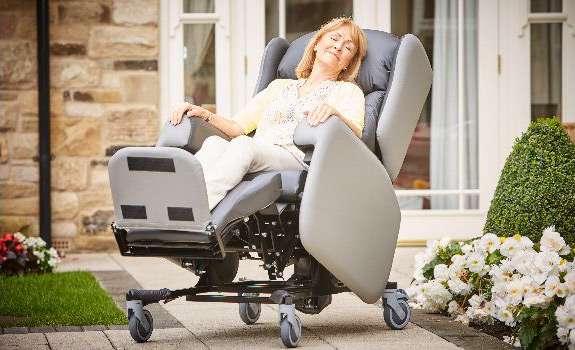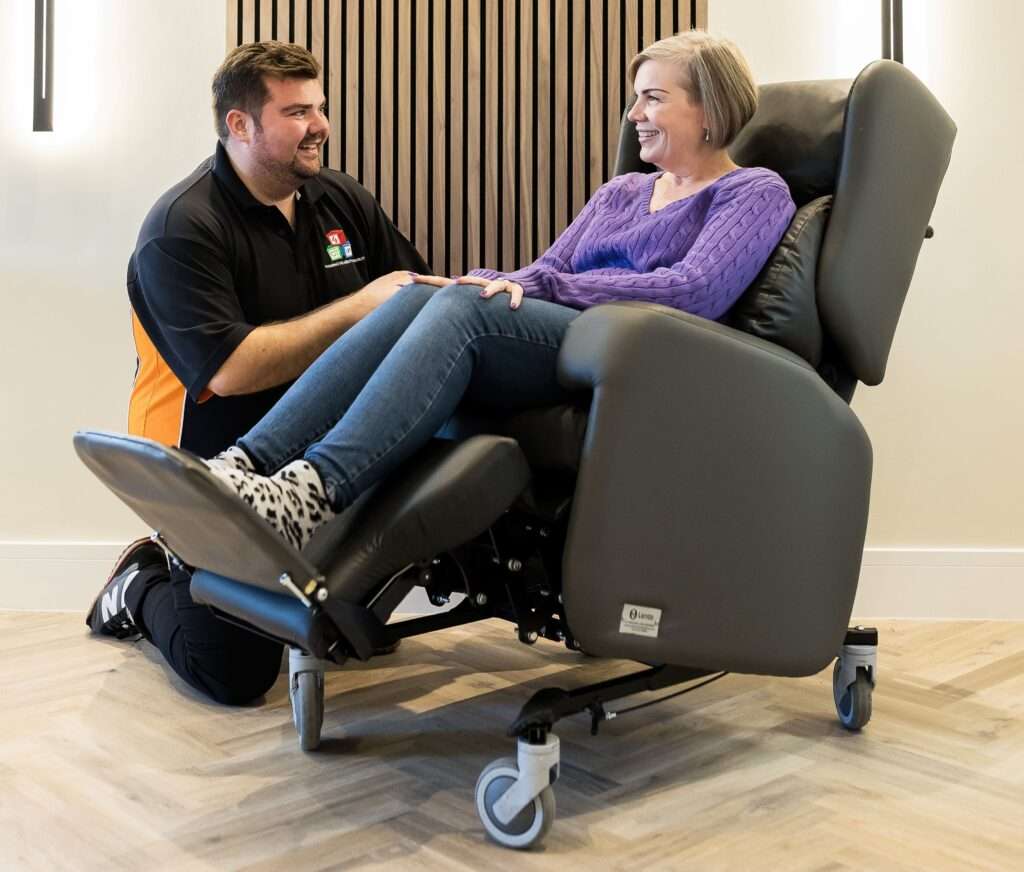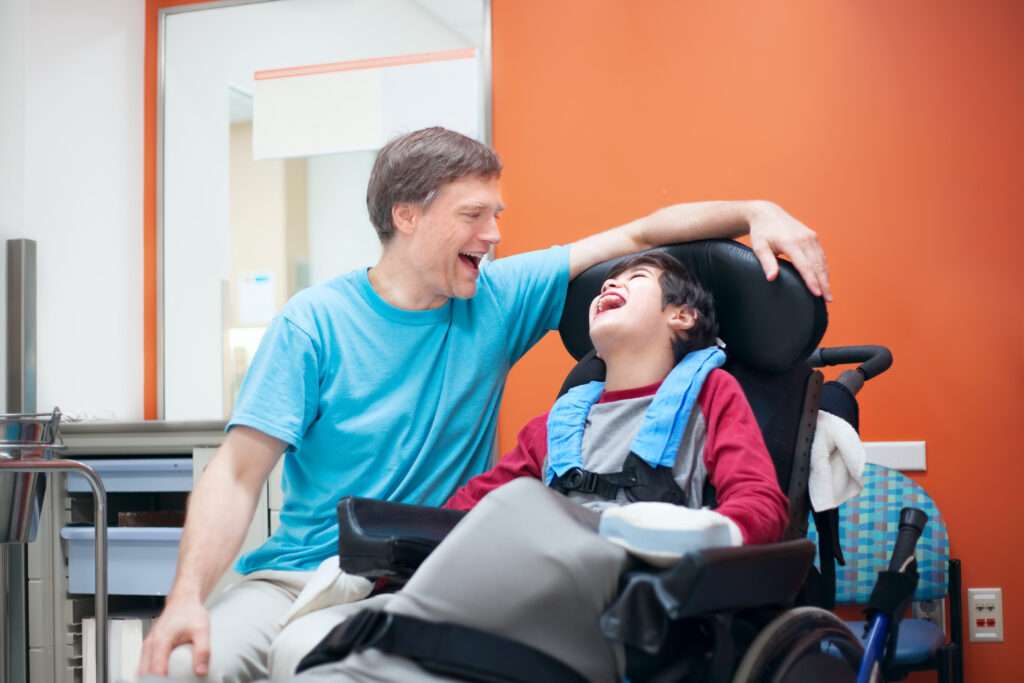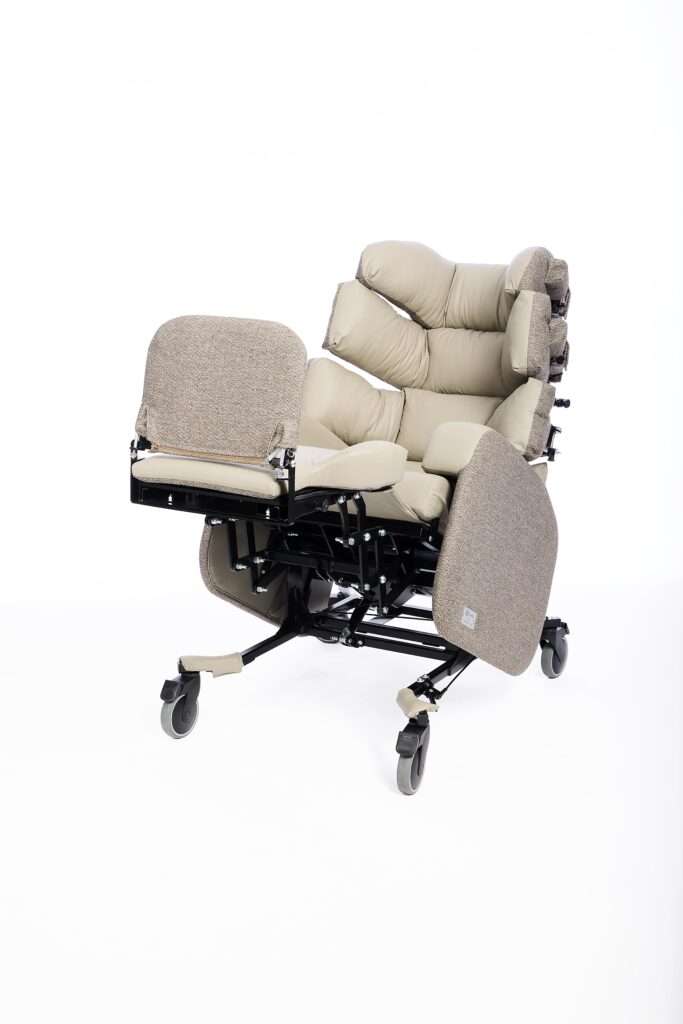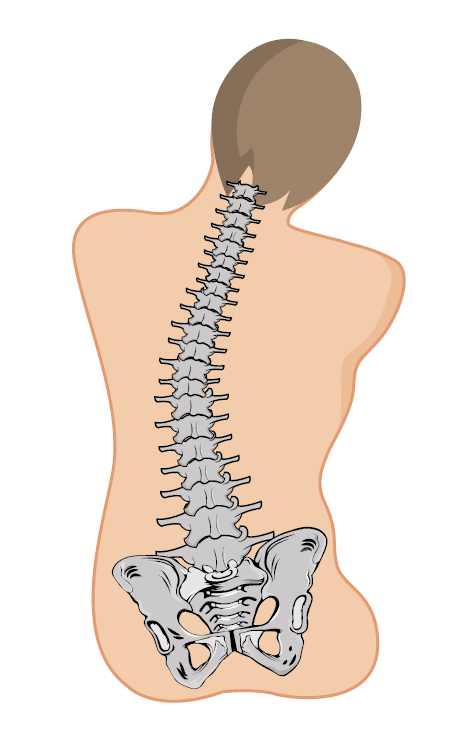When you side transfer someone from a chair there are a few different ways it can be done depending on the chair.
Here are the different options available and how you can side transfer to and from them.
Jump straight to…
Side transferring from a recliner chair
Riser recliner chairs can include various features and configurations to make it easier for you to carry-out side transfers. Different configurations have different benefits, but here are some options.
Drop-down arms
Drop-down arms are available on some rise and recline chairs to make side transfers easier. Usually, these can be dropped down at the touch of a button.
Drop-down arms are probably the easiest way to side transfer someone from a chair because they’re easy to use and very straightforward. One downside of drop-down arms is that it leaves a noticeable gap between the chair and the armrest which doesn’t end up looking quite as cosy or homely.
Whilst drop-down arms are the easiest way to side transfer from a chair, beware that the surface may not be entirely level as the person moves across it.
Removable arms
Some riser recliner chairs can also come with completely removable arms. As you can imagine, this is easy for side transfers because it simply means that the side isn’t there.
These armrests are usually slotted into the chair from above and held in place with two prongs.
Then you can hoist or transfers the person from or to the chair with ease.
Electric flip-up arm
An electric flip-up arm is also available on some riser recliners. Usually, the arm unit (from about the height of the top of the seat) will split and flip-up so it is next to the backrest.
This then gives you easier access when carrying out side transfers.
Vertical rise
Riser recliners that are equipped with a vertical rise function can also make side transfers simpler.
Using vertical rise along with flip-up arms or drop-down arms, you can maintain a nice flat surface at any level to make side transfers more straightforward. In some cases you might want to elevate your seat a little higher than the level you are transferring to.
Vertical rise is also available on chairs with Variable Action Lifts (VAL).
The Elevator riser recliner is a chair with vertical rise. All you need to do is make the seat level with the arms to slide right across with ease.
Care Chairs
Side transferring from a care chair is quite similar to a riser recliner. You can have the same configurations and features that will help make it easier to move sideways on and off the chair like removable arms and drop-down arms.
One method we find very useful when you side transfer someone from a care chair is to have a removable armpiece. This doesn’t always come as standard on a care chair, but it does on the Lento.
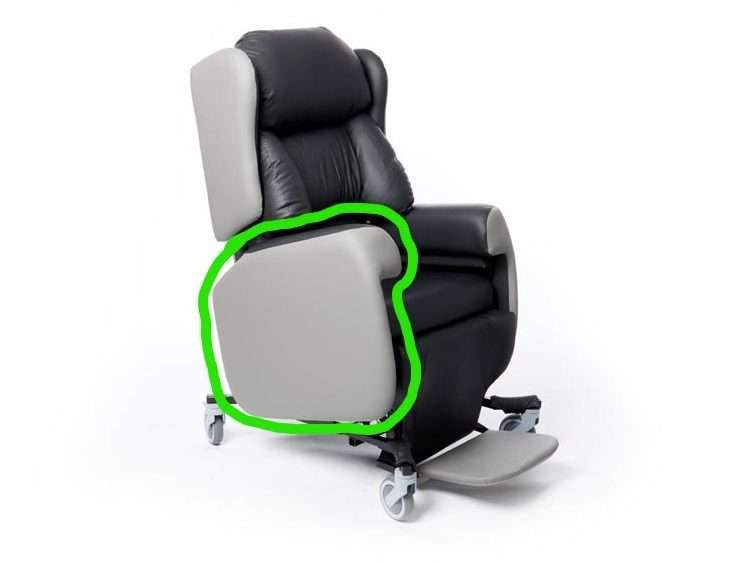
The Lento comes with removable arms are standard, making side transfers as easy as possible.
The removable arm of the Lento is a bit different because the entire arm unit actually comes off. This means that the seat is completely flat for you to side transfer over and it provides easier access.
Side transferring from a high seat
High seats can also be side transferred to and from in a couple of different ways.
Just like riser recliners, some high seats can come with built-in drop-down arms to make it easier for side transfers; they work in the same way and can be dropped by just holding a button and moving them. Alternatively, some high seats might have fold down arms which flip up and down when needed.
How to carry out a side transfer from a chair
One thing you may need to hand when you’re carrying out a side transfer is a transfer board — specifically a banana board. As the name suggests, these are shaped like a banana and curve around any obstacles to make it easier for patients to be transferred.
To begin, adjust the arm of your chosen chair (wherever possible) using the above-mentioned methods. Once the arm has been moved or removed, place the banana board (with the non-slip mats facing downwards) bridging the gap from the chair to whatever you’re transferring to.
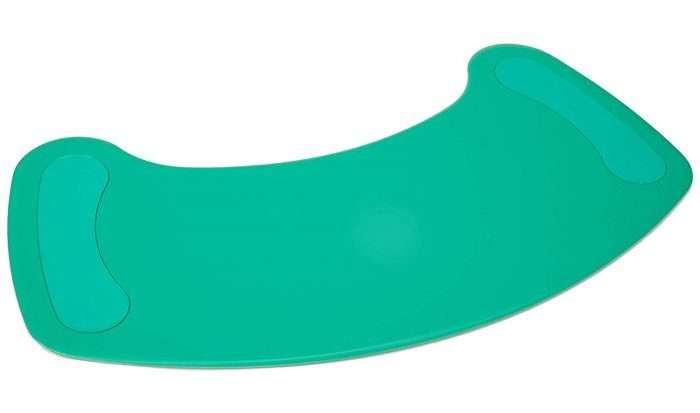
Using a banana board will really help you carry out side transfers to and from a chair.
Make sure the inward curve of the board is towards the back of the chair.
Ask the person to lean to the opposite side to where you’re transferring across and slide the board slightly under their buttocks to hold it in place. Then move the person’s feet to the far side again and place their hand on the board ready to shuffle them across.
Try and use simple commands like ‘ready, steady, move’ to help the person shuffle themselves across the board. Hold their hand in place and gently move further along the board with each shuffle.
Depending on the person’s physical strength, it could only take a few movements to move them from the chair.
Once they are comfortably sat in the second chair (or whatever it is you’re transferring to), ask them to lean over again so you can remove the banana board from beneath them.
Summary
These are a few ways that you can side transfer someone from a chair using various mechanisms. If you’re needing help with any seating recommendations or moving and handling tips, get in touch with our team.





